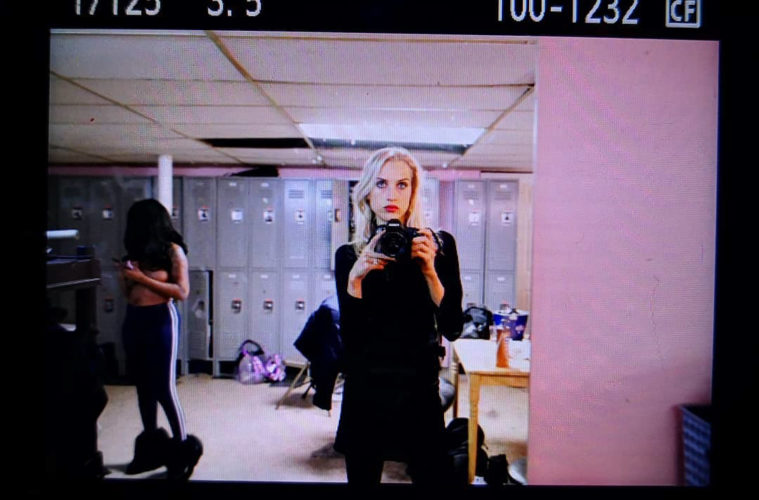 Waterman’s photography practice has always trended toward portraiture of interesting people in works that are candid and intimate, even raw, but also elegant, editorial and both journalistic and art historically minded. Her striking depictions of artists and performers, especially in images exploring female sexuality, sex work, and the nature of obsession, are both theatrical and authentic. Waterman is currently launching her book, MONEYGAME (XYZ / Lisbon), featuring 75 color and black & white photographs from her five-year foray into the strip club and sex work industry in New York, Los Angeles, New Orleans, Las Vegas, and Miami.
Waterman’s photography practice has always trended toward portraiture of interesting people in works that are candid and intimate, even raw, but also elegant, editorial and both journalistic and art historically minded. Her striking depictions of artists and performers, especially in images exploring female sexuality, sex work, and the nature of obsession, are both theatrical and authentic. Waterman is currently launching her book, MONEYGAME (XYZ / Lisbon), featuring 75 color and black & white photographs from her five-year foray into the strip club and sex work industry in New York, Los Angeles, New Orleans, Las Vegas, and Miami.
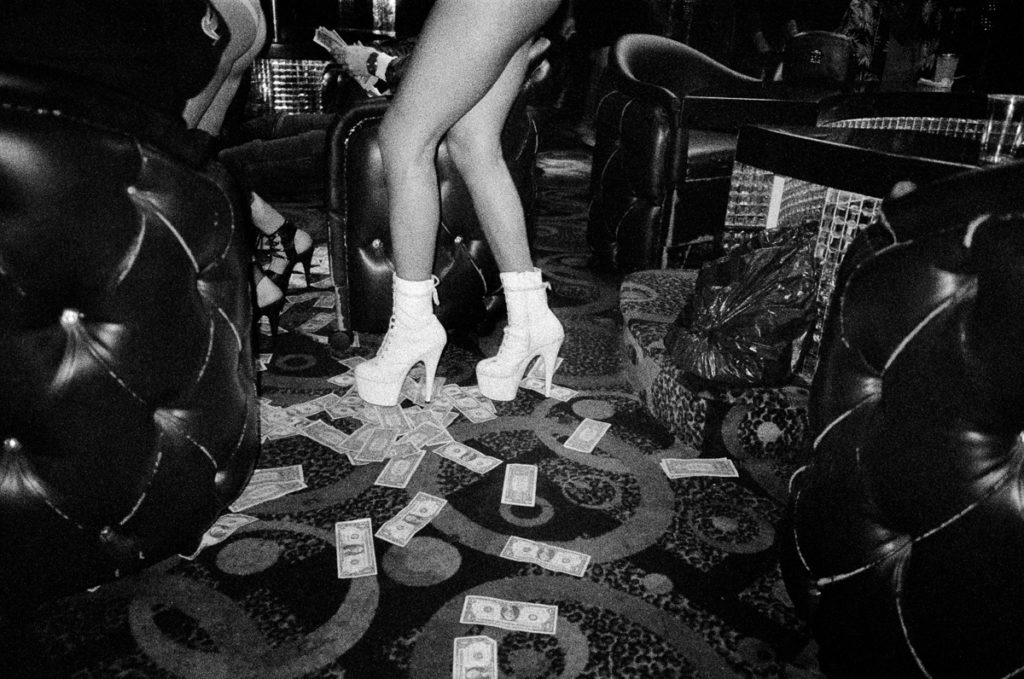
Elizabeth Waterman: Crazy Girls
L.A. WEEKLY: When did you first know you were an artist?
ELIZABETH WATERMAN: At seventeen, with a disposable camera, I shot my first frames of Chicago streets. Those first black and white rolls (developed at Walgreens) revealed images of a dark, poetic world. This is how I can tell my story, I thought. Finally. I never looked back.
What is your short answer to people who ask what your work is about?
My goal is to capture the idiosyncratic moments within our moments, to show the world as I experience it: imperfect, ambiguous, and breathtaking.
What would you be doing if you weren’t an artist?
I can’t imagine doing anything else.
Did you go to art school? Why/Why not?
I earned my BA in photography from USC and a technical degree from the Hallmark Institute of Photography in western Massachusetts (no longer around). I was fortunate to have had the ability to go to school, but I must say that all my relevant internships and jobs over the years were equally as valuable.
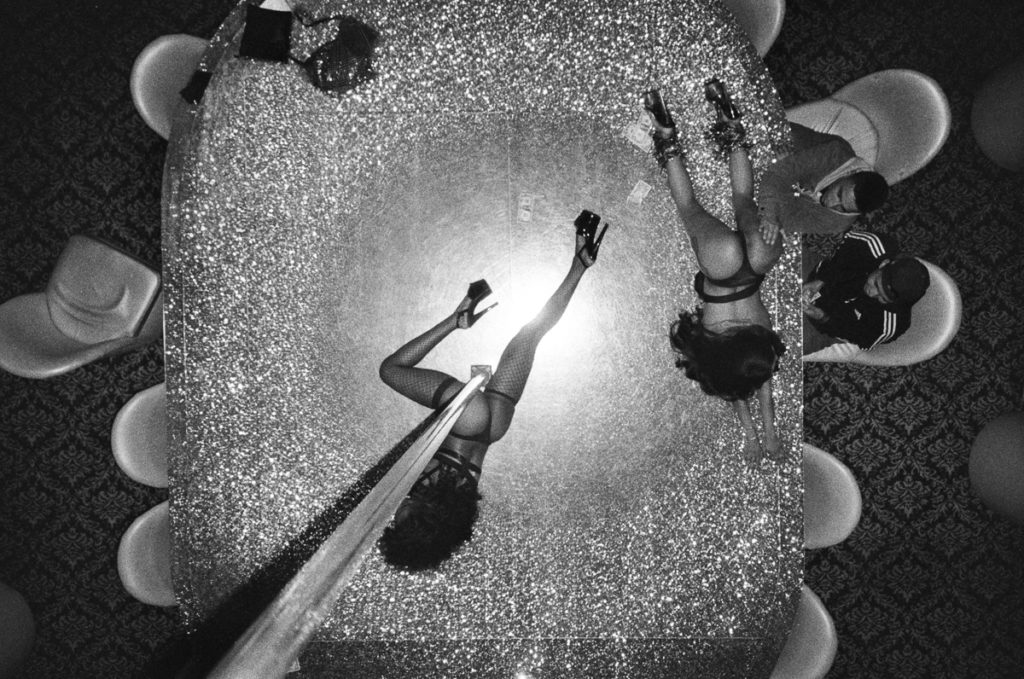
Elizabeth Waterman: Deja Vu
Why do you live and work in L.A., and not elsewhere?
I adore L.A. I am happy here. It’s beautiful and sunny, over-the-top, and fun. New York City was stressful, and the Midwest is, well, cold. Both are good enough places to visit but not to live in.
When was your first show?
“The New God” was a series of black and white portraits of the New York City artist scene that I exhibited at the former Wallplay gallery (in NYC) in 2013. That was my first solo show.
When is/was your current/most recent/next project?
I just published MONEYGAME, which is a book of photographs featuring the world of strippers in the United States. For four years I’ve been engrossed in capturing these sexy, talented women on 35mm film, and XYZ Books Lisbon has done a knockout job with the printing. Early this September, I’ll be showing prints from MONEYGAME at a pop-up gallery in London!
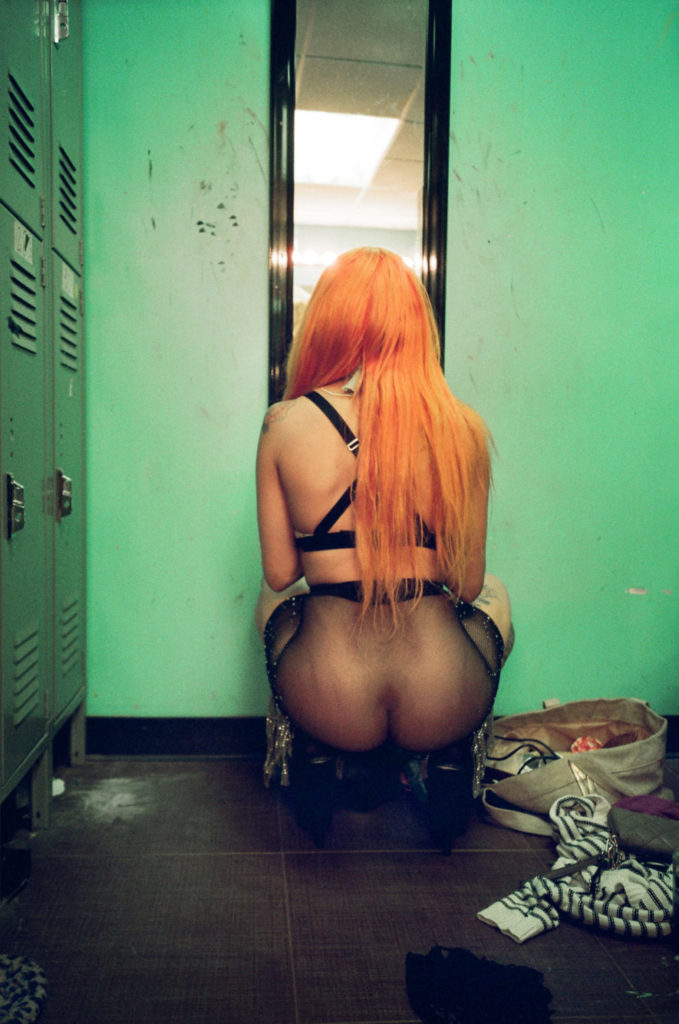
Elizabeth Waterman: October 2017
What artist living or dead would you most like to show with?
My hero is Susan Meiselas, a Magnum photographer who published a groundbreaking body of work on strippers in the ‘70s. I’d be honored to show my work alongside hers. And of course, I’d love to put together a show with my talented husband, photographer Michael Grecco. He has a brilliant body of retro-punk photos from Boston in the ‘80s, shot on film, raw and elegant, which would present brilliantly with my images.
Do you listen to music while you work? If so, what?
When I am shooting and editing, I prefer silence. The experience of the visual imagery consumes and satisfies me. But hey, if you want to play some trance, I wouldn’t complain. Some chill Underworld or Leftfield or Morgan Page. And if I’m shooting in the strip clubs, Future or French Montana, please.
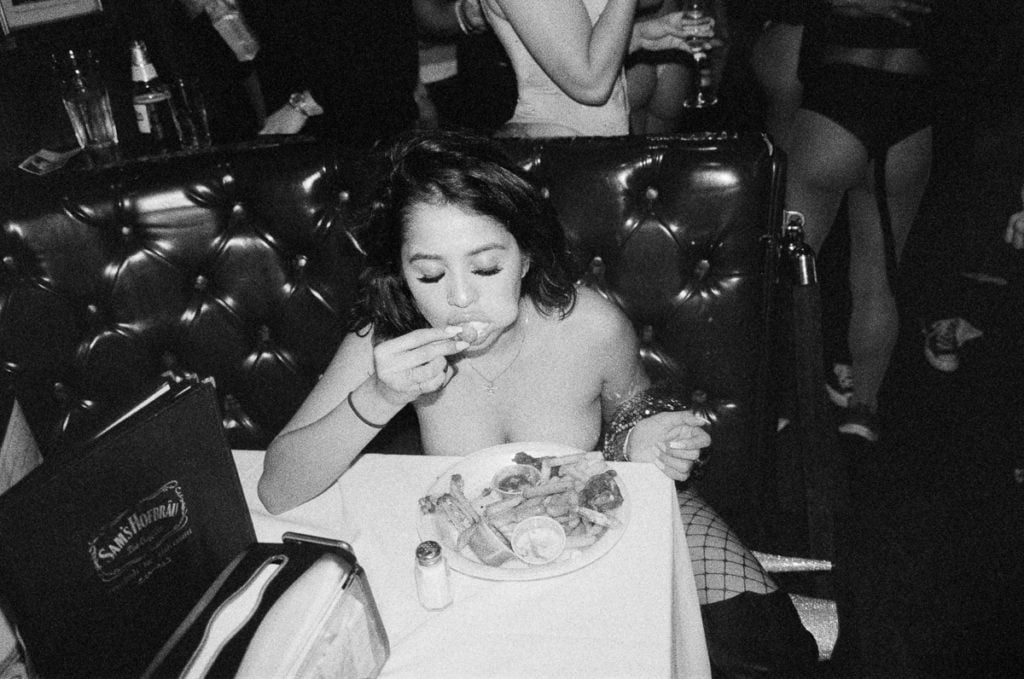
Elizabeth Waterman: Crazy Girls
Website and social media handles, please!
IG: @elizabeth.waterman
Twitter: @eliz_waterman
Advertising disclosure: We may receive compensation for some of the links in our stories. Thank you for supporting LA Weekly and our advertisers.

